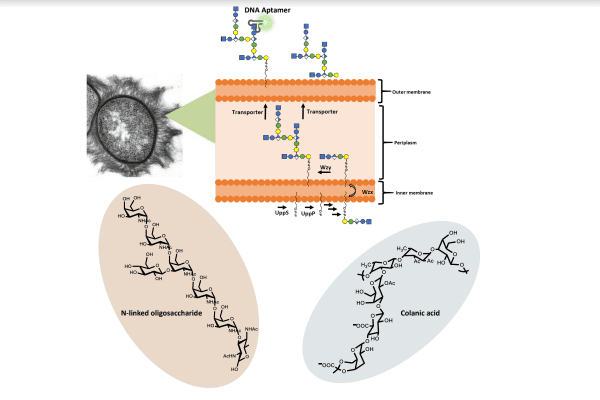Katelyn Erickson

Katelyn Erickson

Analysis and Development of a Targeting Strategy for Bacterial Sugars
Abstract:
Bacterial cell surface polysaccharides aid in protecting microbes from the defense mechanisms of the host and differ substantially in structure between species. Exploiting these structural differences would be advantageous to target certain types of bacteria over others for organism selective antimicrobial agents or reagents to detect specific bacteria in the environment. Using the N-linked oligosaccharide from Campylobacter jejuni as a model system, we have developed a method for producing the oligosaccharide repeat unit of a bacterial surface polysaccharide. Using this system, we will now develop a new way to immobilize bacterial sugars for the isolation of agents that specifically interact with the cell surface of bacteria. Not only was this completed for the N-linked oligosaccharide from C. jejuni, the immobilization method was also utilized for the newly elucidated colanic acid biosynthetic pathway from E. coli. Alongside the developed immobilization platform, our lab has acquired mutant strains of E. coli, one that contains the N-linked oligosaccharide and one that does not. Utilizing the difference between the E. coli strains, we have selected for agents specific to the C. jejuni polymer in a whole cell experiment. The selection of the whole cell and immobilized agents have been completed for the two glycans of interest and for two strains of E. coli and visualized by gel electrophoresis and flow cytometry. For the immobilization method, synthesis of an analogue with a different chemical handle has been completed, followed by successful building of two different sugar repeating units onto the new analogue, as seen by HPLC analysis and ESI-MS analysis.
Sponsoring Chair: Dr. Jerry Troutman
Committee: Dr. Craig Ogle, Dr. Christine Richardson, Dr. Juan Vivero-Escoto, Dr. Kirill Afonin
Defense Date: Monday, November 5, 2018 at 11:00 AM